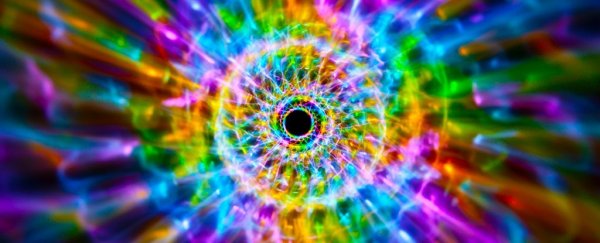When you try to hear someone talking in a noisy crowd, your brain helps out by filling in what you missed, based on expectations built from past experiences.
Our brains can sometimes get it hilariously wrong, but generally this system is pretty good at keeping you up to speed. Now, it looks like this system might also be involved in hallucinations.
A new study has suggested hallucinations arise when our brains start believing this system of expectations over - rather than just in support of - what our senses are telling us. While this can happen occasionally to anyone, at their extremes, hallucinations are symptoms of serious mental illnesses such as schizophrenia or bipolar disorder.
To figure out how our brains create this glitch, neuroscientist Katharina Schmack from Cold Spring Harbor Laboratory and colleagues developed a model of hallucinations in mice – a challenging task seeing you can't ask rodents what they're experiencing.
"Right now, we're failing people with serious psychiatric conditions. The prognosis for psychotic patients has not substantially improved over the past decades, and that's because we don't really understand the neurobiology of the disease," explained Washington University neuroscientist Adam Kepecs.
"Animal models have driven advances in every other field of biomedicine. We're not going to make progress in treating psychiatric illnesses until we have a good way to model them in animals."
So clearly, an animal model is much needed, but it also should be applied with caution. As with physiological studies relying on animal models, we need a thorough understanding of their limitations, such as how they, their development, and their environmental conditions differ from us, as well as how they're similar, to be able to draw sound inferences.
The researchers dealt with some of these factors by also making direct comparisons with human subjects during their tests.
Human volunteers and mice were presented with a computerized task of detecting a tone within a background of noise. Humans indicated if they heard the tone by clicking one of two buttons, and the mice had been trained to respond to the tone by poking their head into one port if they heard it, or the other port if they did not.
Out of the 220 human volunteers, those who self-reportedly experienced hallucinations (measured by a questionnaire for evaluating psychiatric symptoms) were more likely to detect the tone when it wasn't there with high confidence – a hallucination-like event.
When the mice were given a known hallucinogen – ketamine – they were also more likely to hear the tone when it wasn't there with greater confidence, which was measured by how long they were willing to wait for a reward.
The team could also prime the mice to confidently falsely detect this tone more frequently, by playing the tone more often, therefore increasing their expectation of hearing the tone. This also happens with humans.
Monitoring the mice's brains, the researchers detected elevated levels of dopamine before they falsely heard the tone – a chemical known to play a role in human hallucinations. The team then demonstrated that boosting dopamine levels caused the hallucination-like events in the mice more often, and that they could be reduced by an antipsychotic drug that blocks dopamine.
"There seems to be a neural circuit in the brain that balances prior beliefs and evidence, and the higher the baseline level of dopamine, the more you rely on your prior beliefs," Kepecs explained. "We think that hallucinations occur when this neural circuit gets unbalanced, and antipsychotics rebalance it."
Of course Schmack and colleagues don't know for sure yet if the hallucination-like event they induced in the mice and humans overlaps in neurobiology with the spontaneous hallucinations healthy people report experiencing – or those experienced during psychotic episodes.
But the system they have now developed will hopefully allow researchers to further investigate these questions, as well as search for new treatments for psychotic disorders.
"We are very excited about this computational approach to study hallucinations across species that enables us to finally probe the neurobiological roots of this mysterious experience," said Kepecs.
This research was published in Science.
